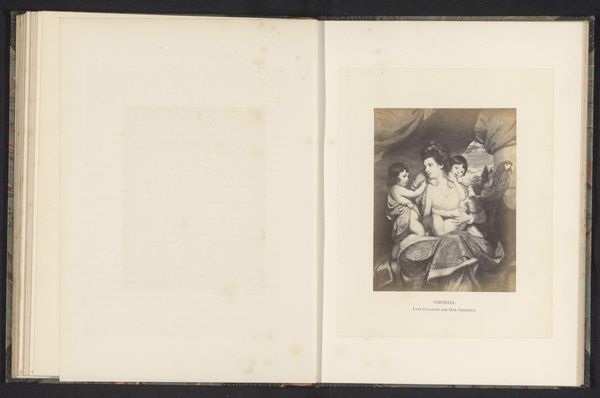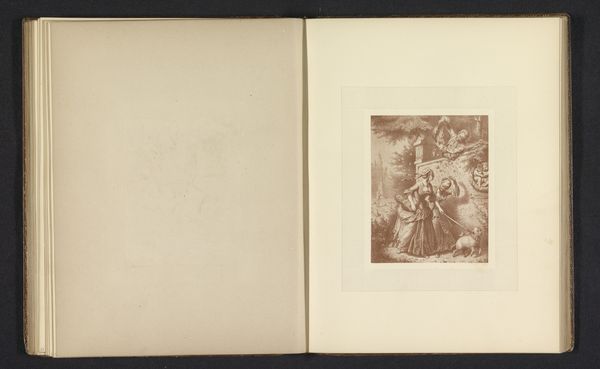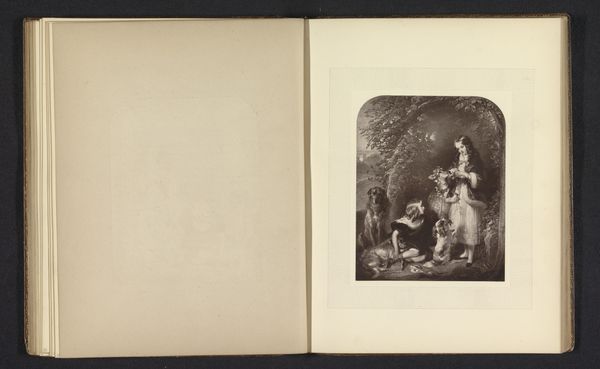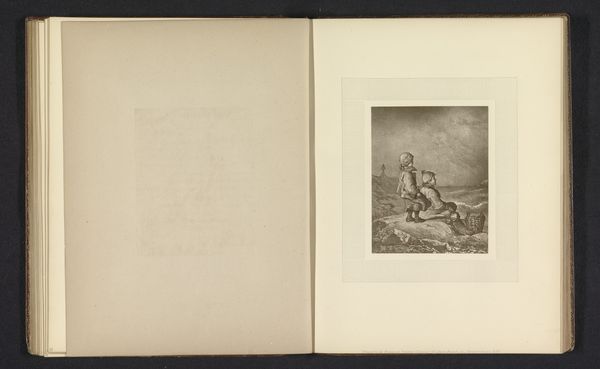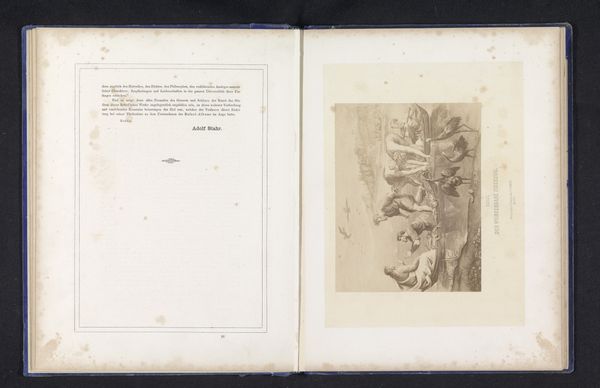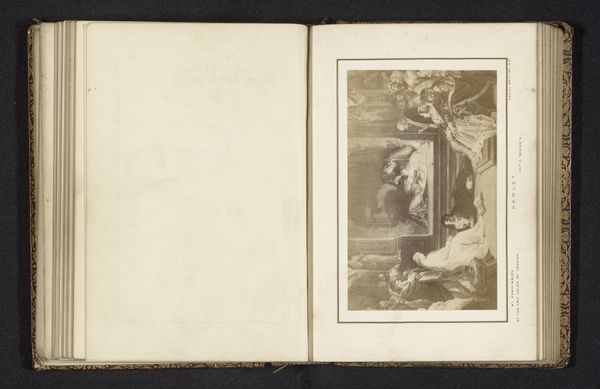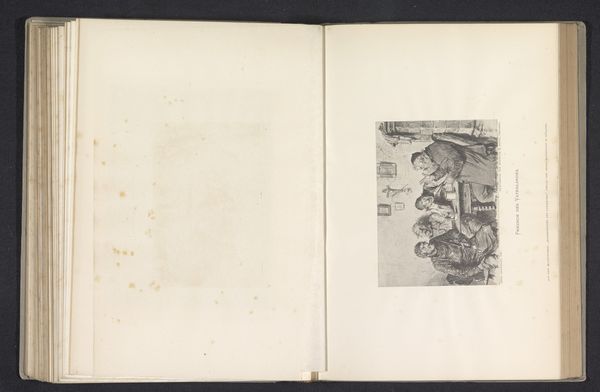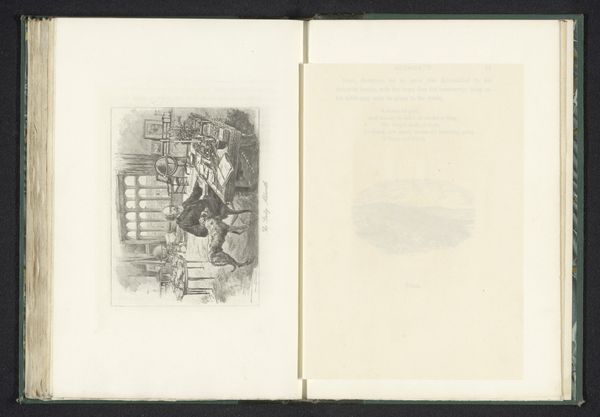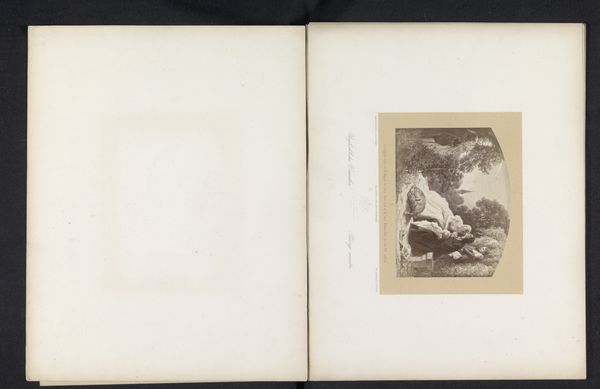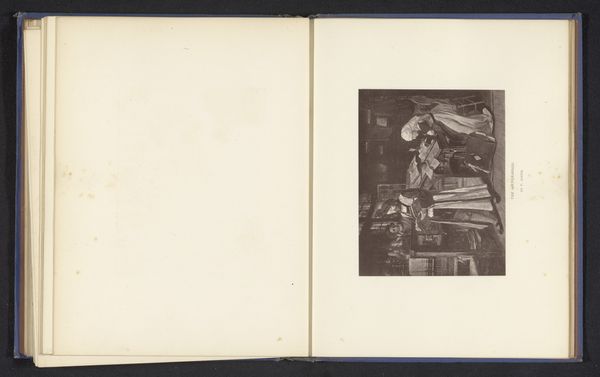
Fotoreproductie van een schilderij van twee slapende kinderen in een bos door Joshua Reynolds before 1867
0:00
0:00
print, photography
#
portrait
# print
#
landscape
#
photography
Dimensions: height 123 mm, width 104 mm
Copyright: Rijks Museum: Open Domain
Curator: Looking at this page, we have what's listed as a photographic reproduction of a painting—the original by Joshua Reynolds, created before 1867. The print, bearing the inscription "The Children in the Wood," showcases two figures asleep within a landscape. What's your immediate take on this work? Editor: It feels… bittersweet. The children’s slumber seems peaceful at first glance, yet the muted tones of the print and the title’s slightly ominous undertones evoke a sense of vulnerability. Are they lost? Forgotten? The landscape itself, though natural, doesn’t quite offer a feeling of safety. It almost speaks to the precariousness of innocence within a larger, indifferent world. Curator: You touched on a central theme there. Reynolds often imbued his portraits, even of children, with a certain sense of classical allegory, positioning them within wider social and moral frameworks. "The Children in the Wood," specifically, ties into a popular ballad of the time, one concerning orphaned children abandoned to die in the forest by a cruel uncle, plotting to steal their inheritance. Editor: Exactly! So, even viewing this photogravure of the original today, we are confronted with historical systems of power and class. How easily were children disposed of when they were considered economically burdensome or impediments to wealth? It reminds us to examine how children were presented and valued across various socio-political structures. Curator: Precisely. While seemingly sentimental, this reproduction prompts viewers to recall those realities and examine the socio-economic positionality of children, especially in contrast to the image's suggestion of an untroubled slumber. It brings up questions about children's welfare as it related to social and economic policies. Editor: Absolutely. Even a seemingly innocent pastoral scene holds layers of social commentary when we unpack its context and recognize the historical implications embedded within. I notice there is also the suggestion that these systems are not completely dismantled but persist. How many children suffer today because of a system not built to nurture and value all? Curator: The photograph reproduction helps disseminate that information into the hands of many more viewers and raises further questions about how artwork functions when mediated through reproduction. This is, clearly, far more than just a sleepy portrait. It is a photograph asking vital questions about systemic negligence. Editor: It really prompts one to confront romanticized portrayals of childhood innocence. A stark reminder that even seemingly idyllic images can serve to gloss over profound systemic failures.
Comments
No comments
Be the first to comment and join the conversation on the ultimate creative platform.
